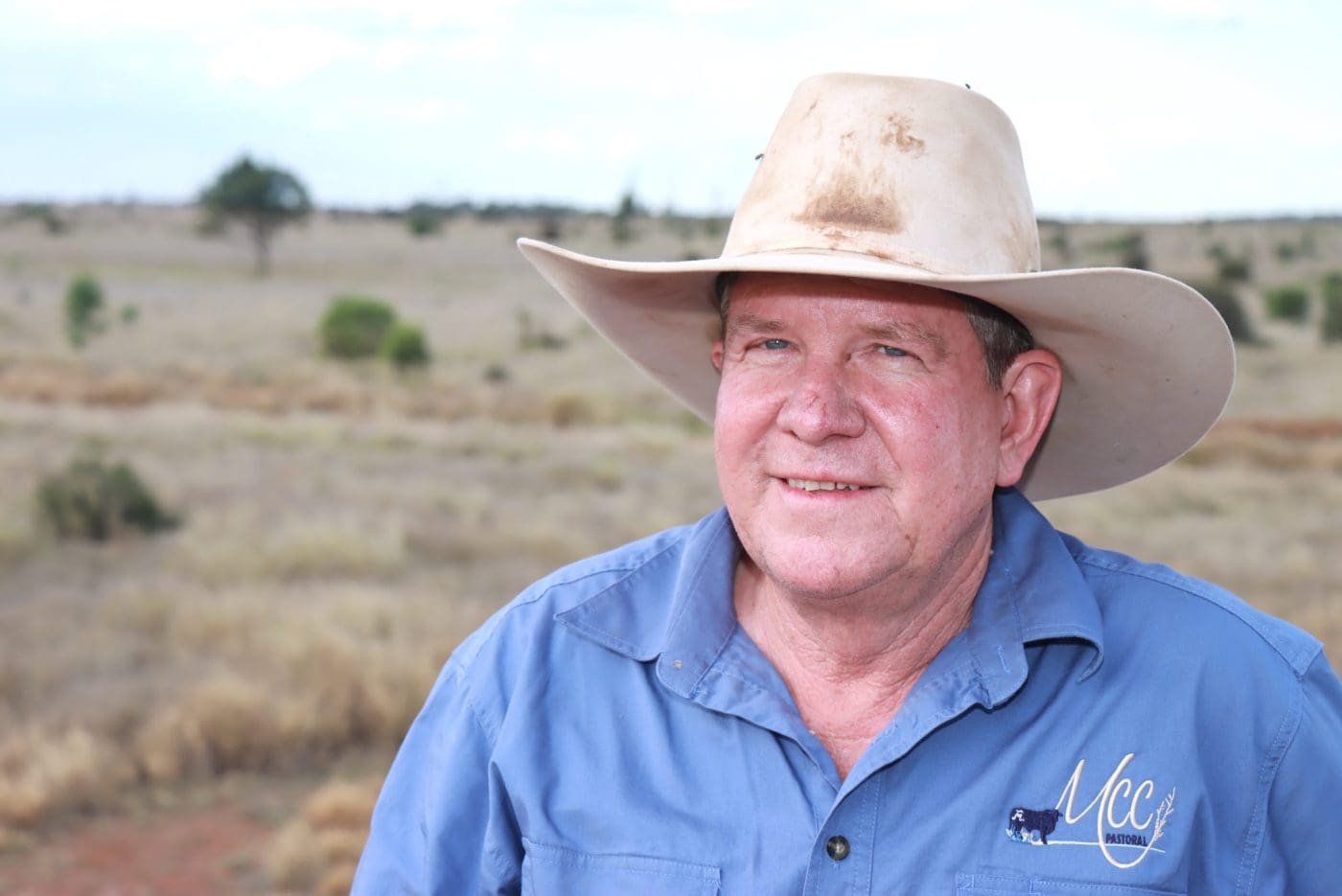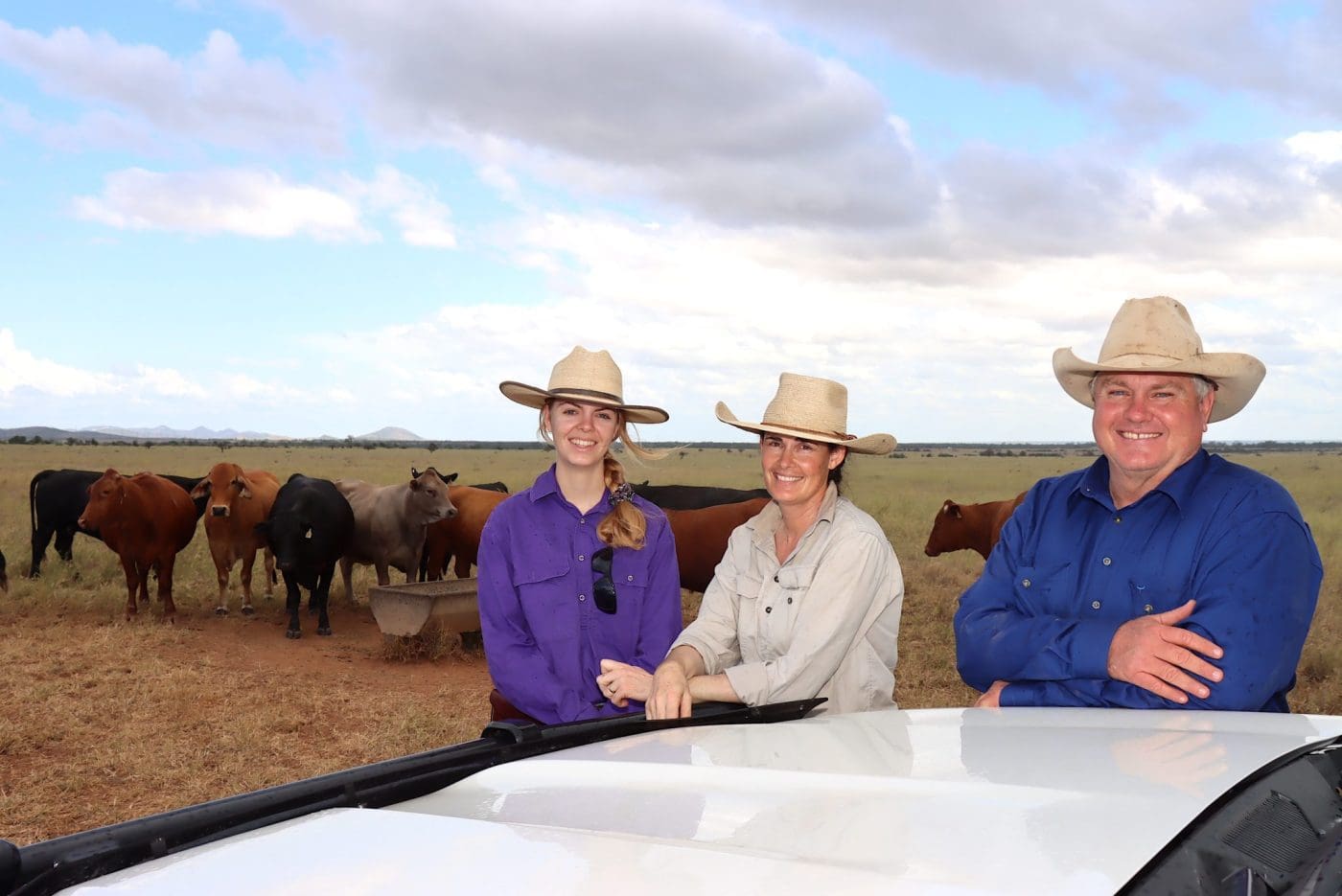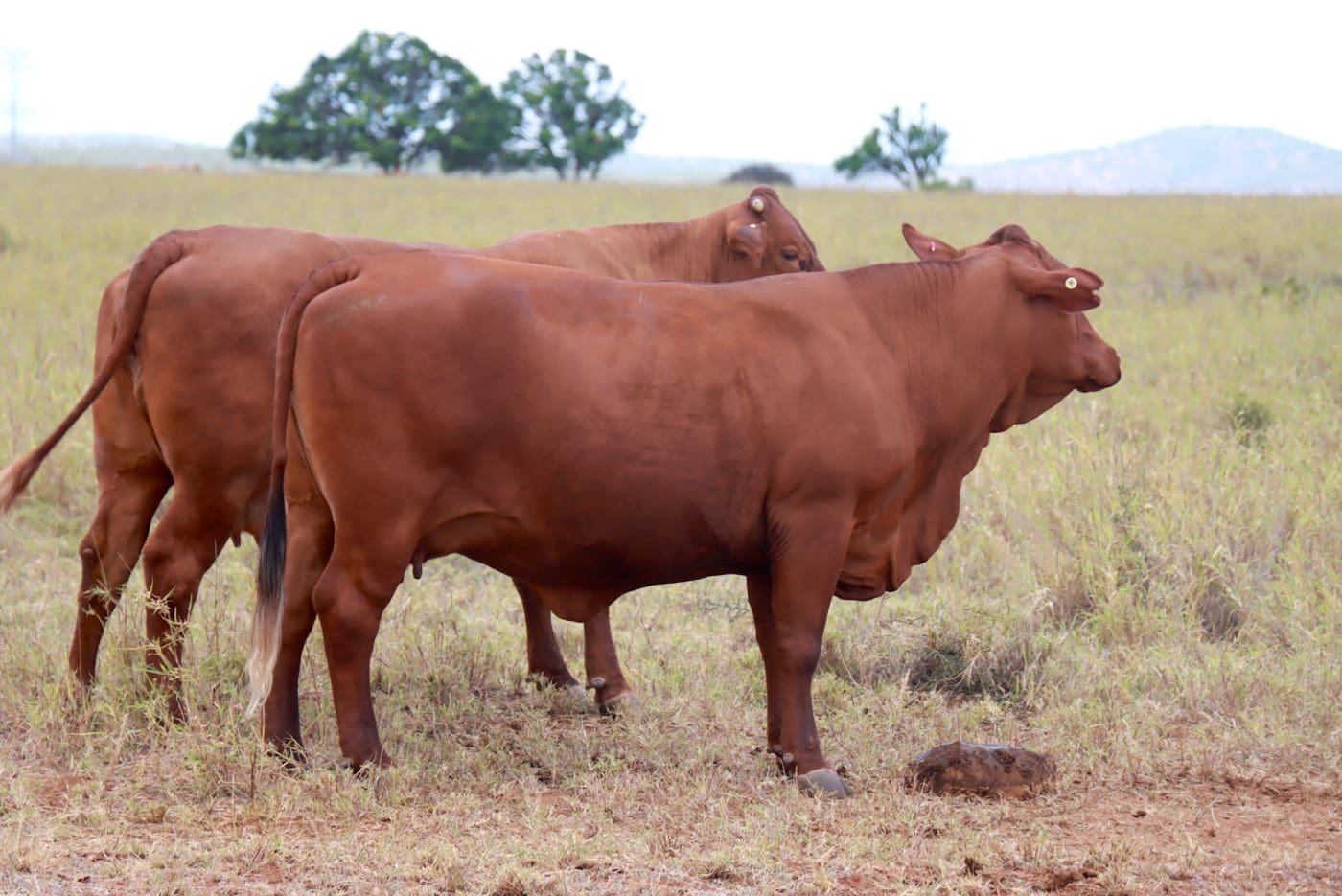
Cattle graze on grass cover interspersed by brigalow shelter belts on Essex, Middlemount in Central Queensland.
Central Queensland cattle producing families say they couldn’t be happier to share the stories of how they manage their land, trees, grass and water with the world.
But, despite being at the centre of an ongoing land management debate being led by environmental activists, academics and corporate food giants, they fear their voice is the only one not being heard at all.
Last week Beef Central spent four days visiting cattle producing families across Central Queensland.
Each has been managing their properties for decades, and in many cases for multiple generations.
Management practices that work against nature don’t tend to stand the test of time, they point out.
“Increasing productivity and having better environmental outcomes go hand-in-hand,” Rolleston cattle producer Ian McCamley observed as he drove along a fence line separating dense ‘whipstick’ brigalow trees on one side and a paddock of knee-high grass interspersed with large shade trees on the other.
“Our management has given us better ground cover and deeper-rooted plants,” he explained.
“We are going to get more moisture in the soil which basically turns a drier environment into a less dry environment, and then you get better species following along.
“It is just a big cycle and if we’re allowed to keep the deep-rooted trees and get rid of the shallow-rooted ones which are causing erosion, that is a great environmental outcome and an economic productive outcome.
“I think so much of the community doesn’t get that.”
Conservation groups argue that the loss of any tree is a bad outcome for the environment. But from the perspective of someone who has worked closely with and studied the landscape for his entire life, Ian believes that view is “way too simplistic”.
“There are good trees and there are bad trees,” he says.
Shallow rooted regrowth that grows thickly and scavenges surface moisture from grass, preventing the establishment of groundcover, versus deep rooted trees around which grass grows clearly have different environmental outcomes, he maintains.
As a legume, the native brigalow tree has symbiotic nitrogen-fixing bacteria in its roots. Landholders we visited last week pointed out that brigalow trees have followed a long-term pattern over eons of being razed by fire and growing back again.
This natural cycle has continually re-fertilised the quality agricultural soils of the brigalow belt for milennia.
“Fire governed this nation, that was just the reality of it, everyone knows it, no one disputes that as science,” Josie Angus from Kimberley Station north of Clermont explained.
“We’ve now got a bunch of different tools that allow us to create that circulation but with a little bit more finesse than a wildfire used to.
“So we can go around the dear old Bottle Tree and we can make a choice to leave a strip or a clump, we can choose which trees we leave, all of these things mechanical tools give us the ability to do, while still generating that natural cycle that land needed or wanted.”
In that regard brigalow is the “goose the laid the golden egg”, she said.
“We’ve got this great native tree that happens to be a legume. We might grow that paddock of bio-fertiliser for 20 years and then no matter what you do to it comes back.
“But the great part is that it does come back.
“So we’re one of the only agricultural systems on the face of the planet where most of us are not using inputted fossil fuel fertilisers.
“The brigalow tree affords us that.”
300km further south at Rolleston Ian McCamley makes the same point: “We now have the ability to target specific areas of regrowth,” he said.
“Rather than the old blanket approach, what we can now do is more targeted, just the pick the regrowth where you’re losing groundcover around trees and just take those out,
“It is just an ebb and flow to maintain good ground cover.”
Maintaining year ground cover is simply non-negotiable, David Hill at Clark Creek, about 200km northwest of Rockhampton, maintains.
“I won’t cop bare ground,” he says.
More than 50 percent of his second-generation family property Clarkwood is remnant vegetation.
The remainder has been developed and sown to improved pastures including deep rooted legumes to maximise productivity.
But the Hills also plan to plant more trees on their open grass paddocks. “Cattle do better in paddocks with trees,” David notes.
About 60km further west at Middlemount, Peter Quinn flies us over his 16,000ha (40,000ac) aggregation in an R44 chopper.
From the air the scenes that unfold below are of dense grass covering every paddock, bordered on each side by extensive brigalow shelter belts.
What becomes quickly apparent is that the only visible bare dirt is on the ground directly underneath the brigalow stands in the shelter belts, where little sunlight can penetrate.
Later, back on land and walking through the same paddocks, “ground truthing” reinforces the same story.
Knee-high grass mixed with deep rooted legumes such as the Desmanthus variety Progardes blankets each paddock.
The retained brigalow scrub in some of the shelter belts has not been touched for up to 30 years and is back to what could be considered close to its natural state.
As this video shows there is little but bare dirt between trees.
“Trees are seen by some as the be all and end all but I would argue in some cases we get more environmental damage from trees,” Peter says.

Peter Quinn pictured with grass finished bullocks on Essex, Marlborough. Earlier this year the Quinns were named Most Successful Exhibitor in the Beef 2024 Commercial Cattle Championships.
“Virgin scrub ground is erodible, with breakaway steep little gullies and erosion, which can lead to lower water quality entering the reef.
“But in the grassed areas those gullies are not like that.
“Water quality is a lot better when we have groundcover like we have across much of this country.
“Flying over our dams you can see two feet deep into the water. Our dam water is as clear as the Great Barrier Reef water.
“The ground cover means water retention, better soil health and microbial activity in your soils, the difference is unbelievable.”
Josie Angus says the circularity of brigalow management can be equated to a long-term rotational graze.
“You pretty much go from a 100 percent agricultural system, which is when you have got it nicely grassed off (following a clearing event), and then over a period of the next 25 years you go back to almost zero in terms of agricultural use, and that is just that life cycle.
“There is no time mandate on it, and probably the longer the rest and the longer that cycle takes better the better the ultimate outcome.
“But it is no different really than rotational grazing – it is a rotation and a cycle.
“But that is where people don’t realise that this discussion around deforestation and mandates on time and all the rest of it is actively discouraging people from using trees in their landscape.
“Even rewilding rules require active management of vegetation, such as coppicing and selection of species. It is not lock it up and walk away.”
Ian McCamley says that while a lot of people look at cattle and other things when they drive around, he looks at ground cover.
 “To me, if we sat down in a room and you included green groups and people from the middle of Sydney, it doesn’t matter, I think we would all agree that the best ground cover we can get is a good thing.
“To me, if we sat down in a room and you included green groups and people from the middle of Sydney, it doesn’t matter, I think we would all agree that the best ground cover we can get is a good thing.
“The key limiting factor in this environment is water in the soil.
“I didn’t say rainfall, I said water in the soil.
“Because you can have rainfall and it all runs off, but if you have ground cover and can keep it in the soil and if there is any runoff it is clear, then that is going to build everything and off we go.”






